Giant Manta vs Reef Manta ?
How to visually differentiated them ?
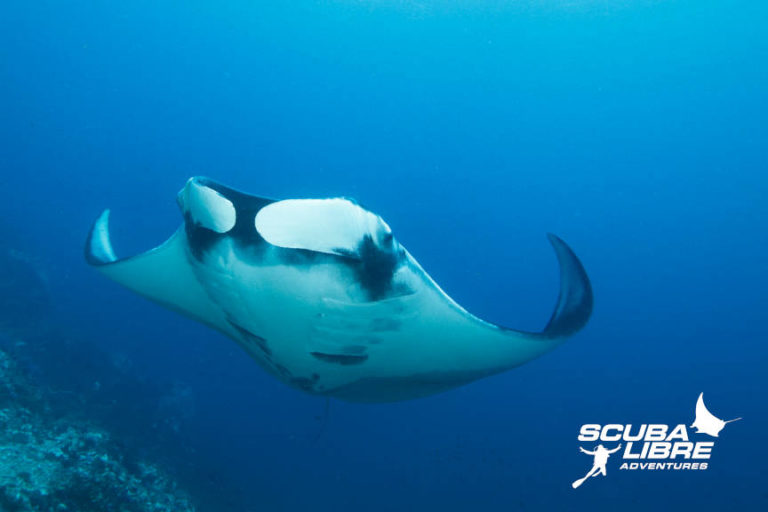
Size
First of all, observe the size. Indeed, the Giant manta ray can reach a wingspan of up to 7 metres and sometimes even 9, while the Reef manta ray remains at around 3 metres and up to 5 metres.
Anatomy
Another physical distinction between the two species is the presence of a blister at the base of the tail of the oceanic manta ray, a remnant stinging spine, which does not exist for reef manta.
Color
About the colour, we notice, for the giant manta, a generally black mouth and two white patches on the dorsal side shows a black “T”. For reef manta, the mouth is white and the dorsal white patches forms a black “Y”.
Moreover, on closer examination, the ventral spots patterns, unique to each individual and true fingerprints that allow them to be identified, are located differently according to the species. For the giant manta, they are found only between the gill slits and tail, without spreading over the wings, whereas for reef manta they can cover the entire abdomen.
Finally, a large black border on the lower ventral part appears clearly on the giant manta. It is more discreet in the reef one. Another physical distinction between the two species is the presence of a blister at the base of the tail of the giant manta ray, a spinal column residue, which does not exists in reef manta.
Behaviour
Let us now turn to migratory behaviour. As their name suggests, each of them operate in a different environment.
The giant manta ray migrates according to zooplankton, its favourite food, always staying far offshore. The reef manta, which is fond of cleaning and feeding stations near the coast, has a relatively sedentary behaviour. It always evolves in an identical sector more or less wide with sometimes migrations in pursuit of plankton.
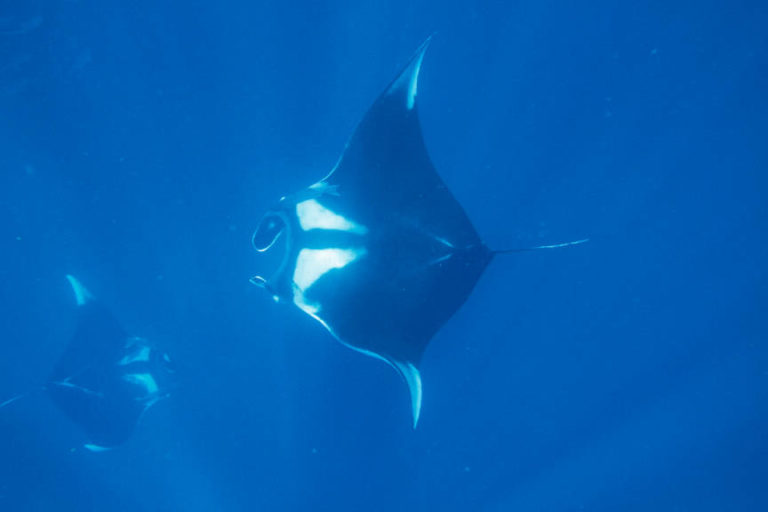
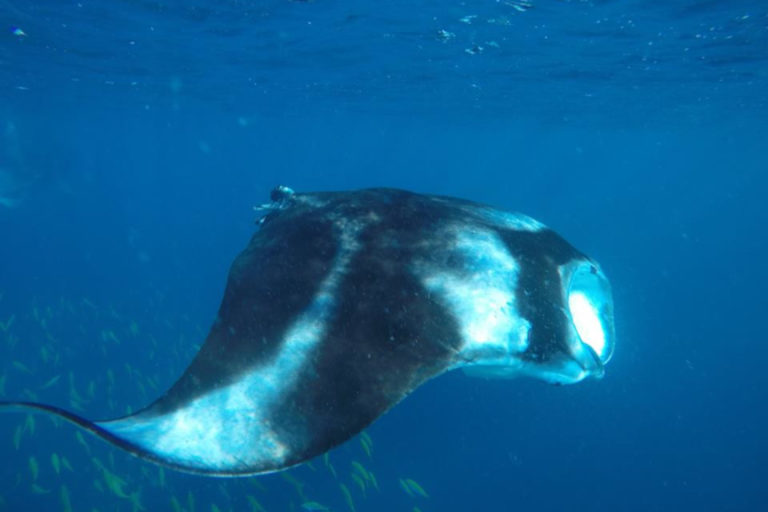
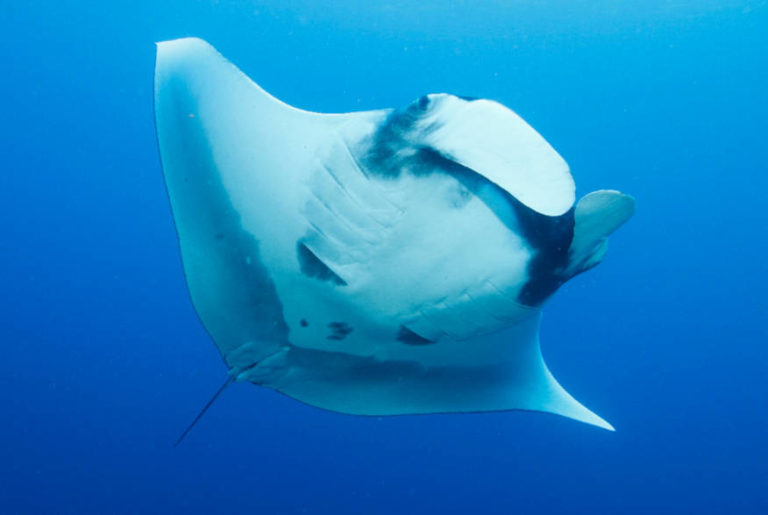
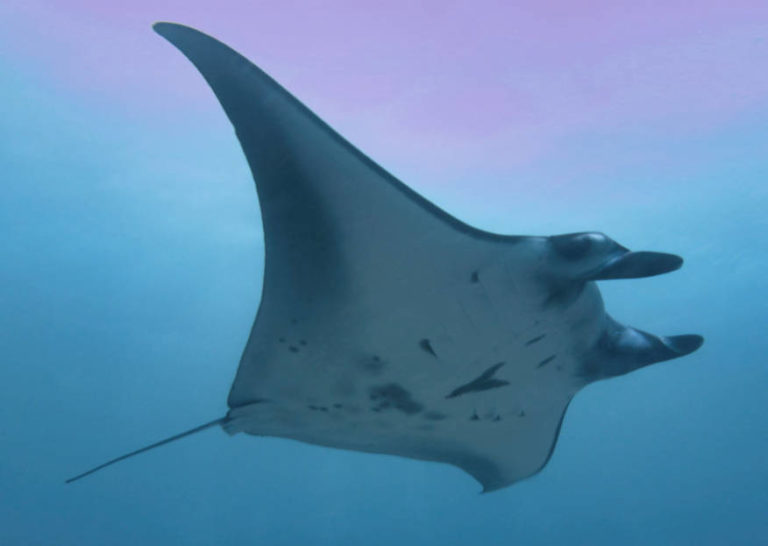
Giant Manta Ray (Manta Birostris)
- up to 7 m, sometimes 9, span
- often black mouth
- dorsal spots forming a “T”
- clear black border on the lower ventral side
- blistering at the base of the tail
- lives off the coasts
Reef Manta Ray (Manta Alfredi)
- up to 5 m span
- often white mouth
- dorsal spots forming a “Y”
- more discreet black border on the lower ventral side
- no blistering at the base of the tail
- lives near the coasts
Both species are on the International Union for Conservation of Nature (IUCN) Red List as “vulnerable” species.
We hope you enjoyed this article. Thanks to Fabien for his nice pictures. To explore more and see them with your own eyes, join us! It is in Black Rock or the Similan that we have the best chance of seeing them.
Enjoy bubbles !